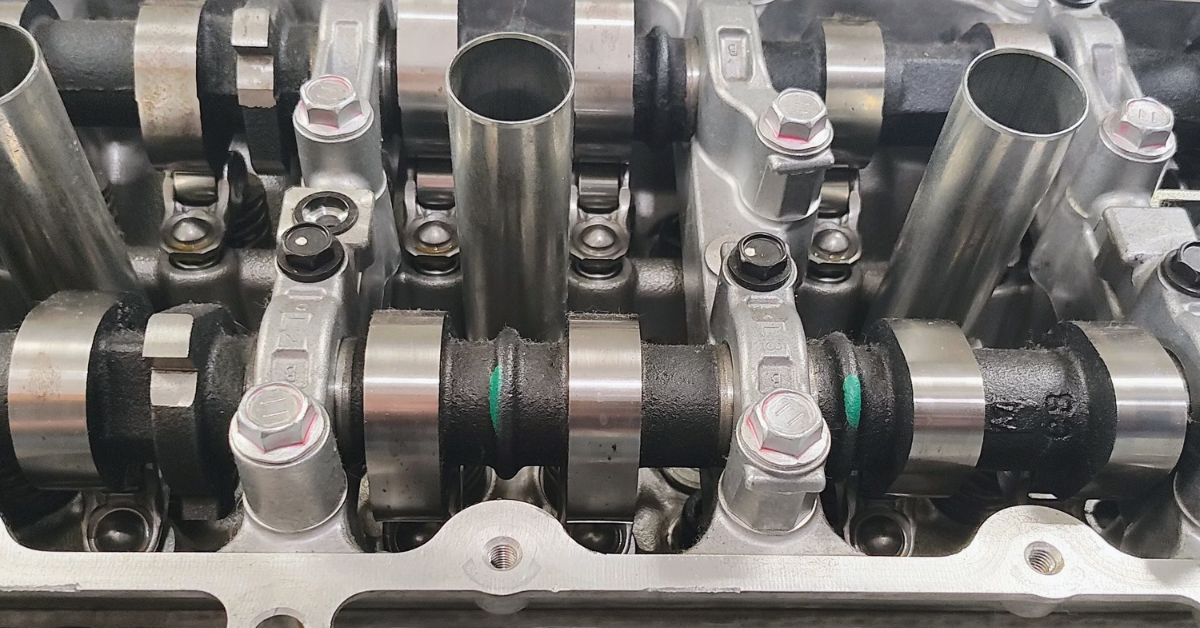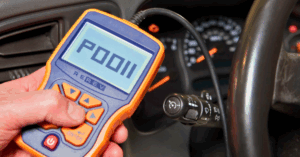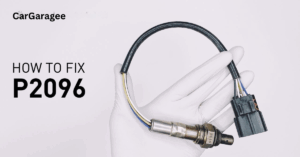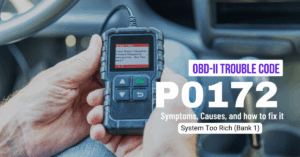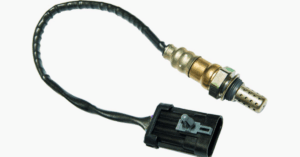Has your check engine light come on with code P0014? This common diagnostic trouble code (DTC) signals a problem with your engine’s exhaust camshaft timing, specifically the ‘B’ position on Bank 1. This position is controlled by the Engine Control Unit (ECU) and plays a critical role in managing the Variable Valve Timing (VVT) system.
When this timing becomes over-advanced, it throws off valve operation, leading to poor engine performance, reduced fuel efficiency, and higher emissions. Addressing this code promptly is key to preventing long-term engine damage.
What Does the Code P0014 Mean?
As an experienced automotive technician, I’ve worked with many vehicles showing the P0014 diagnostic trouble code, especially in engines using variable timing. This generic powertrain code applies to OBD-II systems and signals that the camshaft timing is over-advanced, meaning it has exceeded the expected threshold.
The car’s computer picks up a difference between the desired camshaft position angle and the actual camshaft position angle, usually pointing to Camshaft Position B. In most V6 engine or V8 engine layouts, this refers to the exhaust camshaft on bank one, where the number one cylinder is located.
The problem often stems from issues in the variable valve timing, variable camshaft timing, or control from the engine control module or powertrain control module. Engines with VVT work by adjusting cylinder valves to open at precise times, optimizing the fuel-air mix to keep performance powerful yet fuel-efficient. In flat engine, V engine, or non-inline engines, cylinders are split into banks like bank one, which houses the cylinder 1 or cylinder one.
The “B” camshaft refers to the right camshaft, rear camshaft, or exhaust cam, depending on driver perspective, engine type (DOHC, Dual Overhead Cam), and layout like V configuration or boxer configuration. Being familiar with how each side of engine, cylinder head, and timing systems work is essential for accurate diagnostics.
Which Cars Commonly Show P0014?
This error code is commonly seen in cars such as the Peugeot 308, Renault Clio, Citroën C3, Toyota Yaris, Volkswagen Golf, Ford Fiesta, and BMW 3 Series. While more frequent in older models, it can also occur in newer vehicles.
What does P0014 include?
Exhaust Camshaft Position B (First Bank)
The P0014 error code often indicates an issue with the exhaust camshaft position B on the first bank of the engine, where incorrect alignment disrupts timing and affects engine performance.

Variable Valve Timing (VVT) System
The VVT system controls valve timing to optimize engine efficiency. A malfunction in this system can cause improper timing, reducing engine power and fuel efficiency.
Camshaft Actuators and Phasers
These components adjust the camshaft timing. A failure in either can lead to incorrect valve operation, further affecting engine performance and fuel consumption.
Crankshaft Position Sensor
The crankshaft position sensor provides critical data to the ECU for timing purposes. A faulty sensor can send inaccurate information, causing timing errors and misfires in the engine.
Oil Control Solenoid
The oil control solenoid regulates oil flow to the VVT system. A malfunction can disrupt camshaft timing, leading to poor combustion and reduced engine efficiency.

Timing Chain
A malfunction in the timing chain, such as wear or slack, can cause incorrect camshaft timing and result in the P0014 error, leading to engine performance issues and potential engine damage.
Engine Performance and Fuel Efficiency
If left unaddressed, P0014 can lead to poor engine performance, increased fuel consumption, and potential damage to critical components, affecting long-term vehicle reliability.
Causes of Code P0014
- A malfunction in the variable valve timing (VVT) system is the primary cause of P0014, affecting camshaft timing and oil flow.
- Low engine oil or poor quality oil can disrupt oil flow, which impacts the oil control solenoid, camshaft actuator, and phaser, leading to incorrect timing and position.
- Wiring problems or damaged connectors can interfere with electrical signals to the ECU, causing timing and position errors in the VVT system.
- A faulty crankshaft position sensor can send incorrect data to the ECU, resulting in misfires and issues with camshaft timing.
- Low oil pressure can lead to engine performance problems, such as engine stalling, and exacerbate existing timing issues.
- Worn timing chain, belt, or tensioner, and problems with the PCM or ECM can cause incorrect engine timing and trigger the P0014 error code.
- Regular maintenance, including the use of an OBD-II scanner and diagnostic tools, is essential for detecting issues with oil quality, ensuring clean engine oil, and keeping the camshaft phasers working properly.
Symptoms of a P0014 Error Code
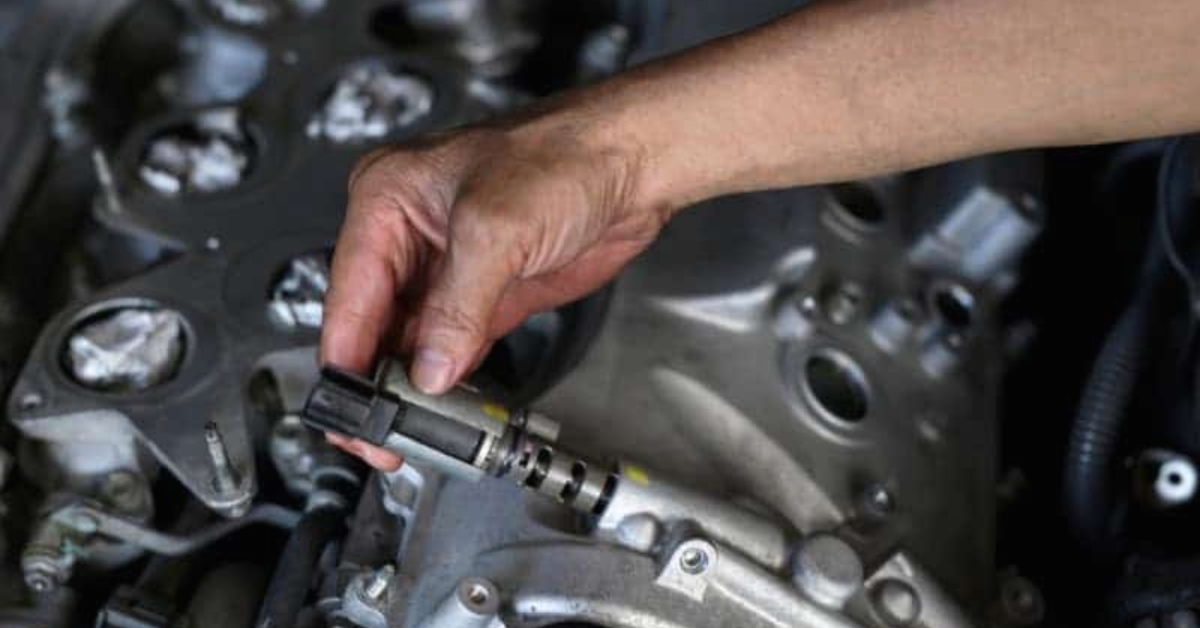
When your car’s camshaft timing is off, it doesn’t just quietly malfunction — it starts showing warning signs. Ignoring these can lead to serious performance issues or even engine damage. Here are the most common symptoms to watch for:
- Rough Idle: The engine may idle unevenly due to improper valve timing.
- Difficulty Starting the Engine: Starting becomes harder as the timing throws off combustion cycles.
- Engine Stalling or Unexpected Shutdowns: A misaligned camshaft can cause the engine to shut off, especially at low speeds.
- Increased Fuel Consumption and Reduced Engine Power: Poor valve timing leads to inefficient combustion.
- Check Engine Light Illumination and Possible Limp Mode Activation: Your ECU may limit engine performance to protect it from damage.
- Unusual Noises from the Engine: A loose timing chain or failing actuator may create ticking or rattling sounds, especially during acceleration.
Can I Still Drive with P0014?
Driving with a P0014 error code is technically possible, but it’s not recommended. It can lead to reduced acceleration, rough idling, and poor fuel efficiency, making driving unpleasant and unsafe. If your car enters limp mode, which is a safety feature to protect the engine, it limits engine performance, helping you get to a repair shop, but not suitable for long drives or daily use.
Unsafe driving conditions may occur, especially in traffic or when merging onto highways, as engine limitations can affect engine performance and lead to acceleration issues, leaving you with unreliable driving and potential engine damage.
Inspect the Camshaft Variable Timing Solenoid
To properly inspect the camshaft variable timing solenoid, follow these key steps:
- Start by gathering hand tools such as a ratchet, wrenches, and sockets, along with a digital multimeter and valve cleaner for cleaning the solenoid.
- Locate the camshaft variable timing solenoid near the Bank 1 exhaust cam or under the cylinder head cover, and carefully remove it for inspection.
- Clean the solenoid using the valve cleaner, and then measure its resistance with the multimeter, ensuring it’s within the 5-15 Ω range; if not, consider replacing the faulty solenoid.
- Inspect the valve mechanism for any debris or damage that could cause the valve to become stuck or binding, both of which can trigger the P0014 code.
- If these steps don’t solve the problem, you may be facing a serious issue like a timing chain, timing belt, or tensioner failure, which could need further attention.

How much does it cost to fix a P0014 code?
To address the P0014 error code, the cost of repairs can vary based on the issue and your vehicle. Understanding the typical costs for common repairs like camshaft sensor replacement, engine oil changes, and more serious fixes like engine chain replacements can help you plan for necessary maintenance and avoid unexpected expenses.
Repair Costs for P0014 Error Code
| Repair Type | Cost Range | Additional Notes |
| Camshaft Position Sensor Replacement | $200 | Common repair |
| Camshaft Variable Timing Solenoid Replacement | $300-$400 | Common repair |
| Engine Oil and Filter Change | $200 | Common maintenance |
| Sensor and Solenoid DIY Replacement | $60-$100 (DIY) | DIY replacement for sensor and solenoid |
| Engine Chain Replacement | $1000 or more | For serious issues |
| Oil Control Solenoid Replacement | $100-$400 | Depends on the vehicle model |
| Synchronization Components Repair/Replacement | $200 to over $1,000 | Cost depends on the damage level |
Conclusion
The P0014 error code is a serious issue that, if left unaddressed, can result in poor engine performance, increased emissions, and costly repairs. Early detection and proper maintenance, including checking timing components and ensuring clean, high-quality engine oil, are key to preventing long-term damage. Use an OBD-II scanner for diagnosis and consult a mechanic if you’re unsure about the issue.
FAQS
Q: How do I fix the engine code P0014?
A: Fixing P0014 usually involves replacing the camshaft position sensor, VVT solenoid, or correcting timing chain issues. Also, check oil quality and levels, as poor oil can affect timing components.
Q: Can P0014 be caused by low oil?
A: Yes, low or dirty engine oil can disrupt the VVT system and oil control solenoid, triggering the P0014 code.
Q: What is the exhaust camshaft position sensor P0014?
A: It refers to a timing issue in the exhaust camshaft (Bank 1, Position B), where the camshaft is over-advanced compared to what the ECU expects.
Q: What causes a camshaft to be over-advanced?
A: Over-advancement is usually caused by a faulty VVT solenoid, worn timing chain, low oil pressure, or issues in the camshaft phaser mechanism.

Mian Hashir is a passionate automotive enthusiast and the lead author at Car Garagee, a website dedicated to providing in-depth car reviews, maintenance tips, and the latest news in the automotive world. With years of experience in the industry, Hashir combines his technical knowledge with a love for cars to deliver insightful and engaging content. Whether you’re a car owner or a curious reader, Mian Hashir’s articles help readers make informed decisions, from choosing the right vehicle to understanding how to keep it in top condition.

